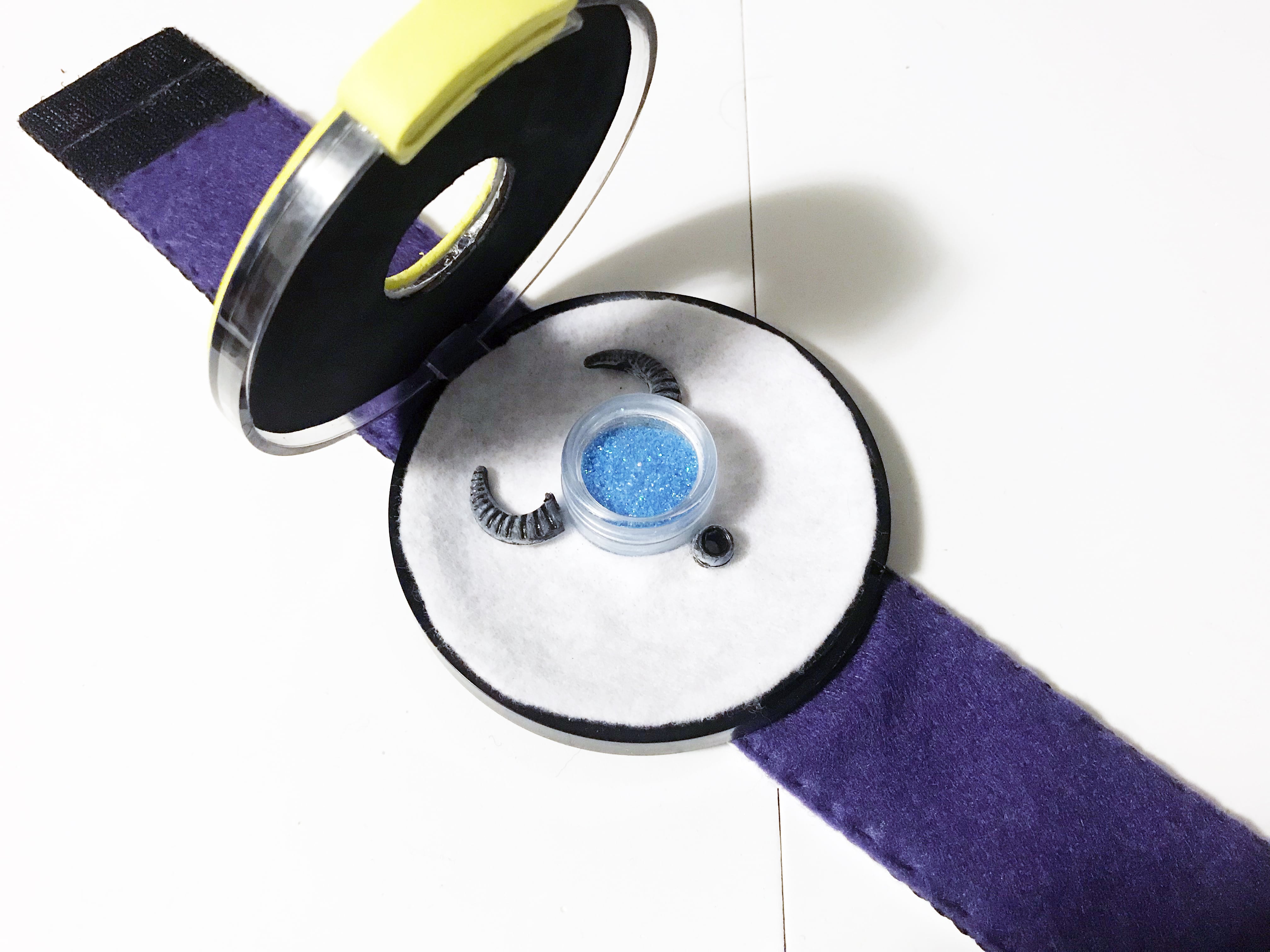APEX
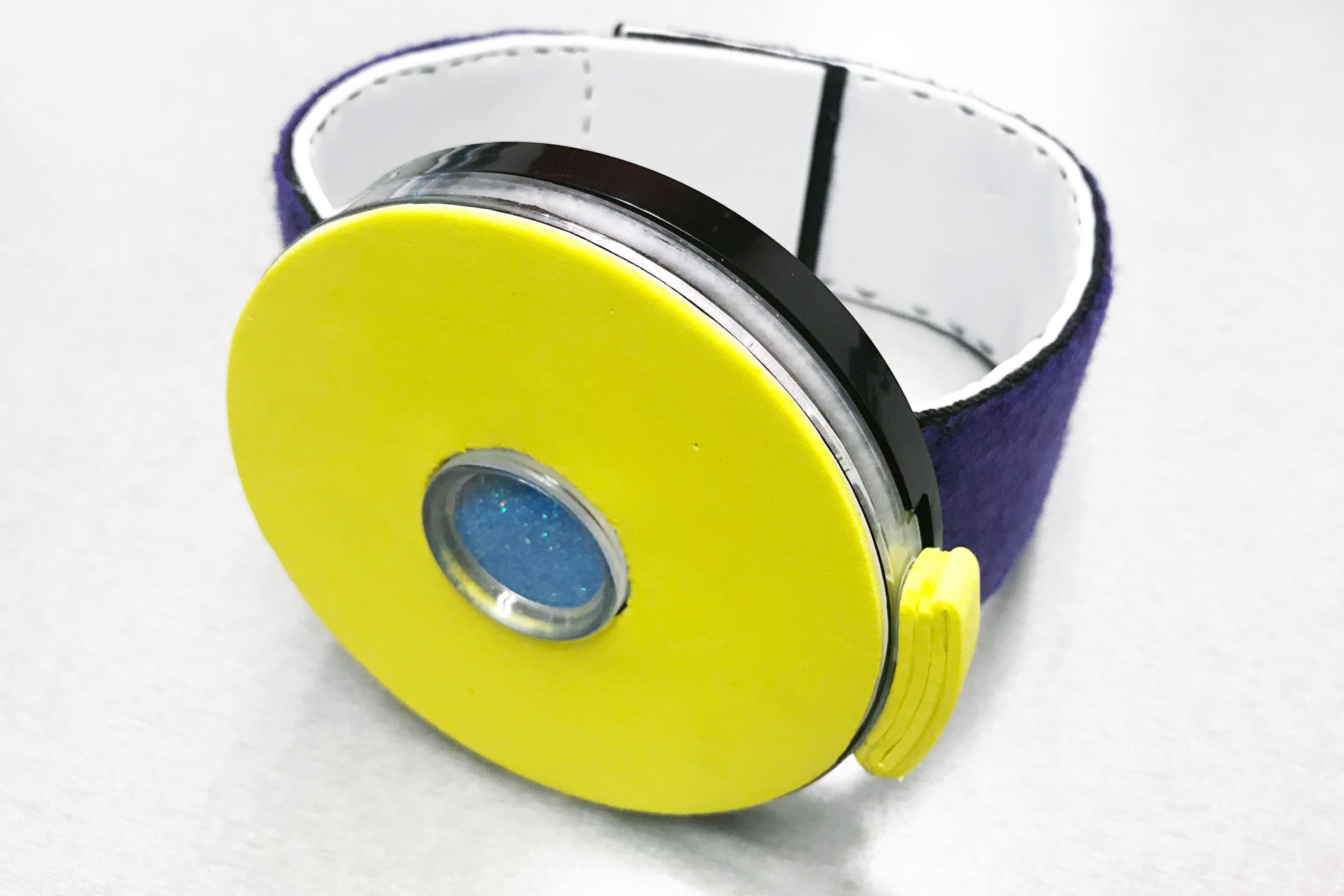
Developing empathy and understanding for users is a key element in design. It is very difficult as a designer to understand that even though we might look similar to each other, or come from a similar place, that we might not want and desire the same things.
Making assumptions – that you want what I want – is one of the easiest traps to fall into. It is essential that when we approach a design challenge, that we approach from a place of learning and that we try to develop an understanding of the user based on research and empathy.

The problem
Understand a fictitious world and design an object for it
Approaching the problem, the team was tasked with using design thinking tools, while focusing on learning on how to develop empathy for our assigned user. In this case, our users would be based on the Ape characters from Mark Wahlberg’s 2001 Planet of the Apes movie for which we had to understand and design an object that would be beneficial to this fictitious world.
Characters needed to be observed and their behavior analyzed after which empathy needed to be developed for the Apes experience within their world.

My Role
My role involved watching the film in detail as well as with the group and contributing to the overall world rules and assisting team members in identifying a possible object to design.
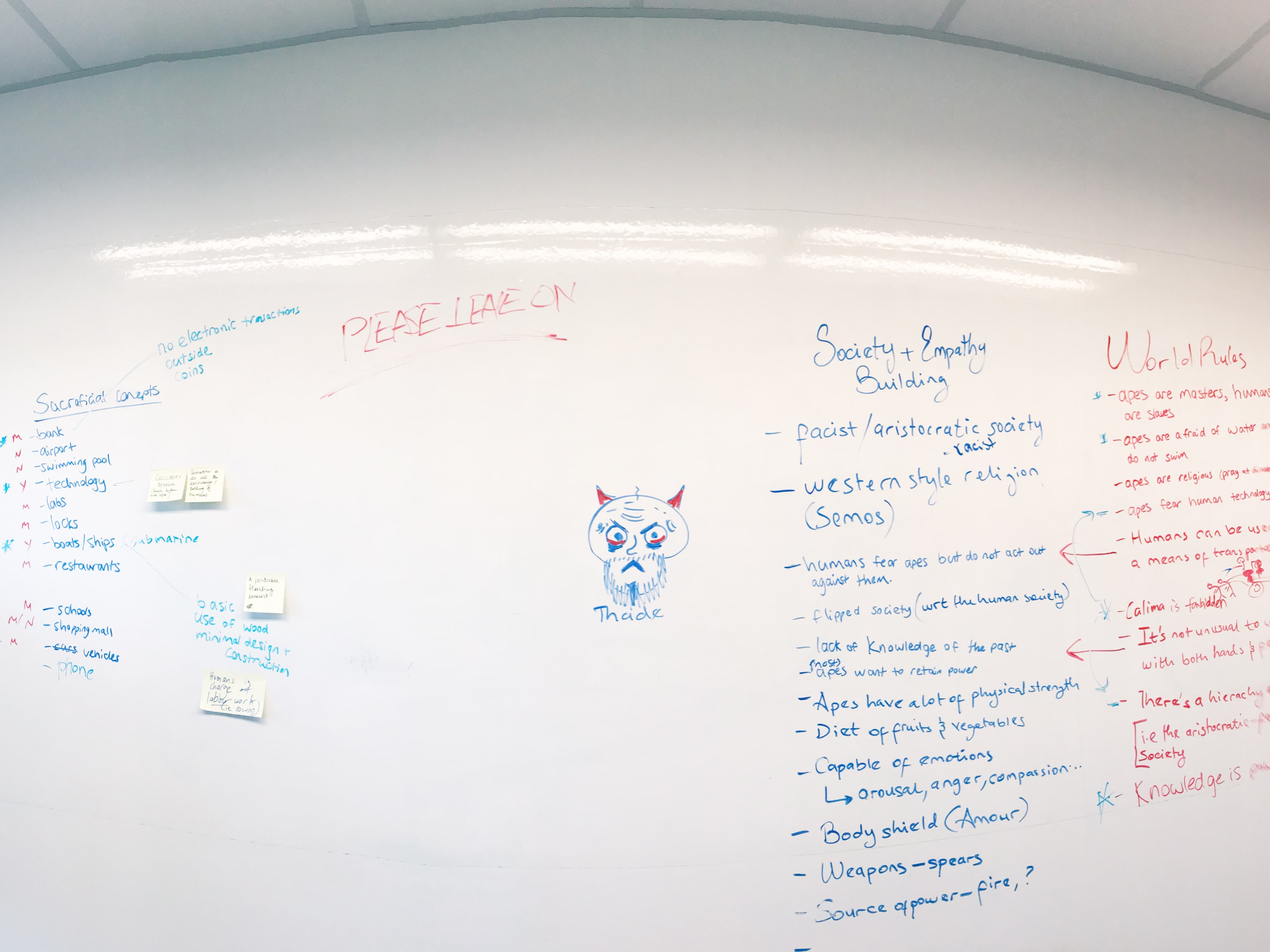
The solution
I decided to target the Apes primary fear which is that of Water. This was also our first world Rule. I empathized with Ari as a character and decided to create a wrist worn device (APEX) that would aid her in detecting bodies of water when she was out exploring the forbidden lands.
The designed object was guided by three key steps:
1. Inspiration: observing and analyzing the Apes world by engaging in world building exercises and develop empathy and understanding of their world.
2. Ideation: critically engage and brainstorm design concepts for the fictitious world. Creating HMW’s, Empathy Maps and Problem Definition
3. Prototype: Through the process of iterative design, create a protype that has been iterated at least 3 times.
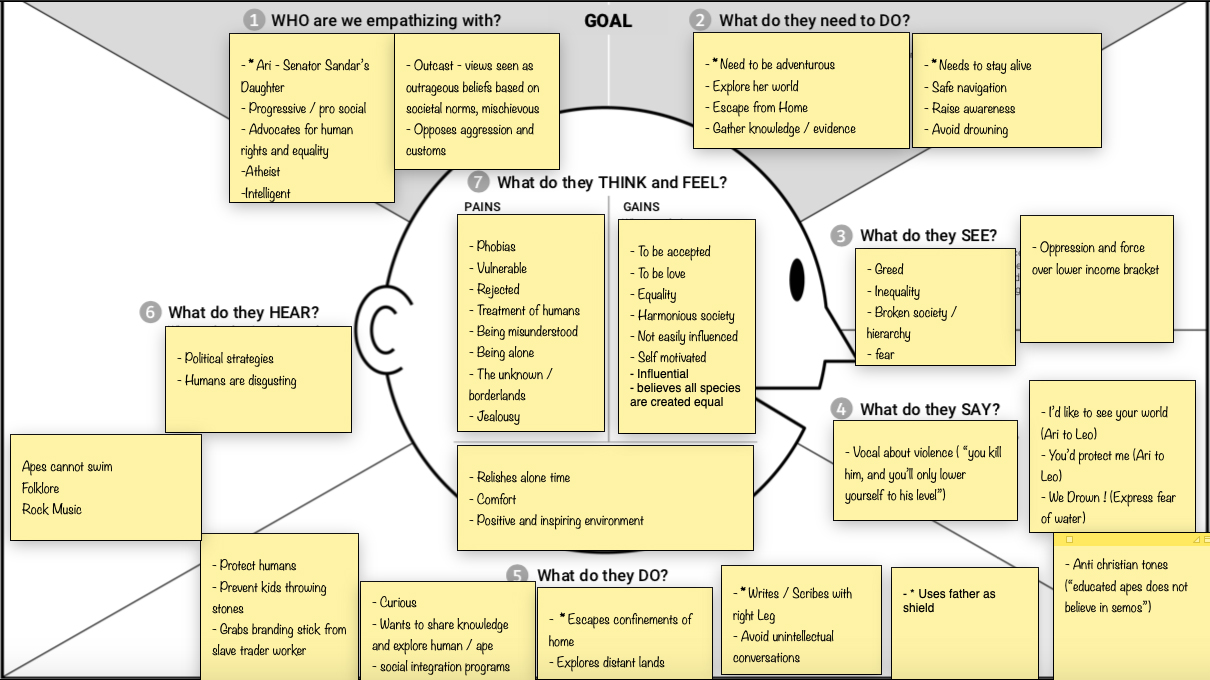
Iteration 1
APEX works by detecting humidity and moisture in the atmosphere. As the Apes world was similar to that of Earth, naturally occurring elemnents were present. The device would contain Cobalt Chloride crystals that would change colour when moisture is absorbed. The Apes have knowledge of fire as a skill and could therefore reverse the crystal's reaction with the application of heat.
The first protype, required the device to be removed and placed on heat source when the reversal of the chemical reaction was required. This was not practical and therefore would have to be improved.
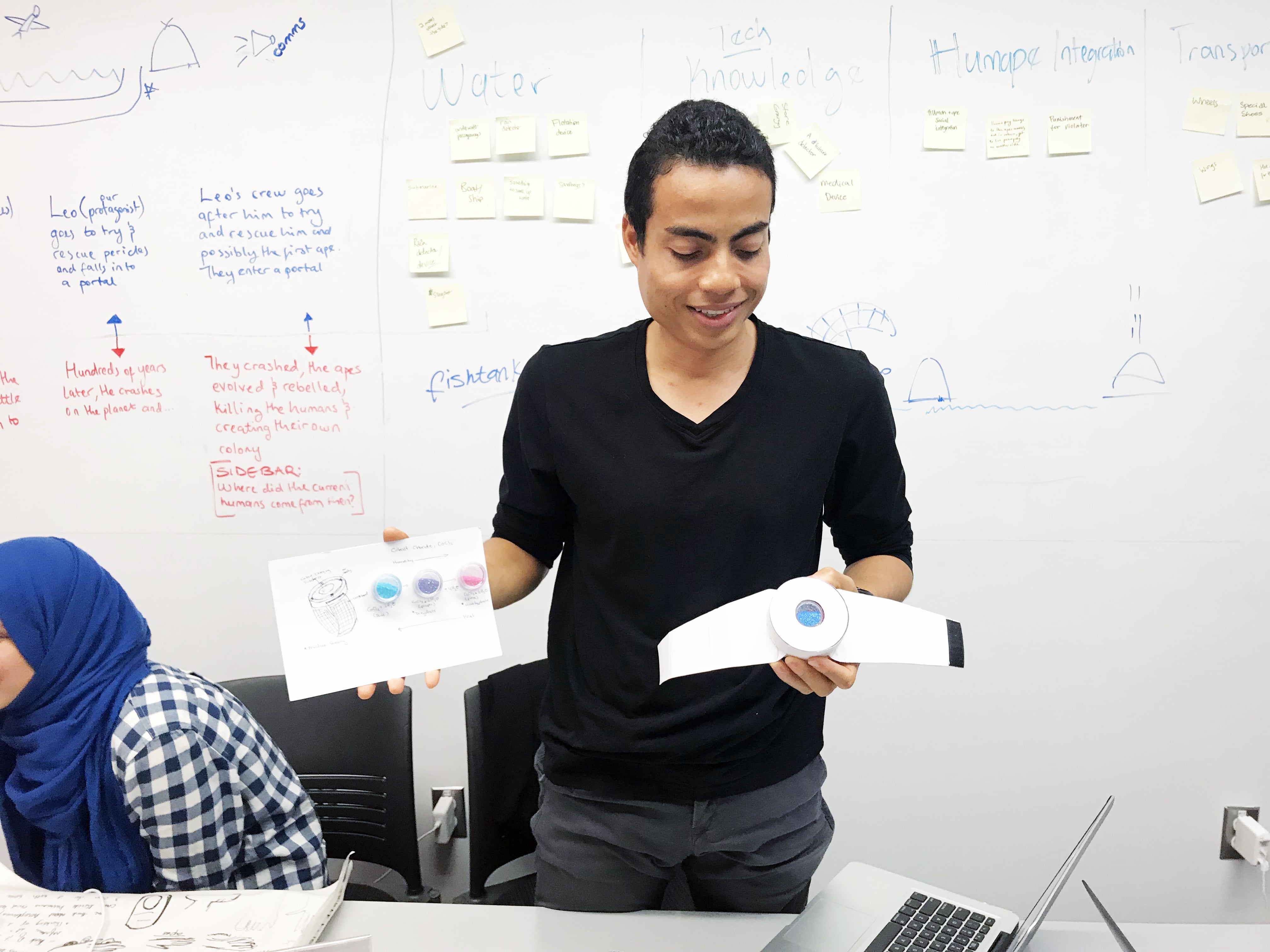
Iteration 2
In improving on the previous design, a “twist cap” feature was considered as well an ejection tray holding the crystals.
Outcomes after empathy testing:
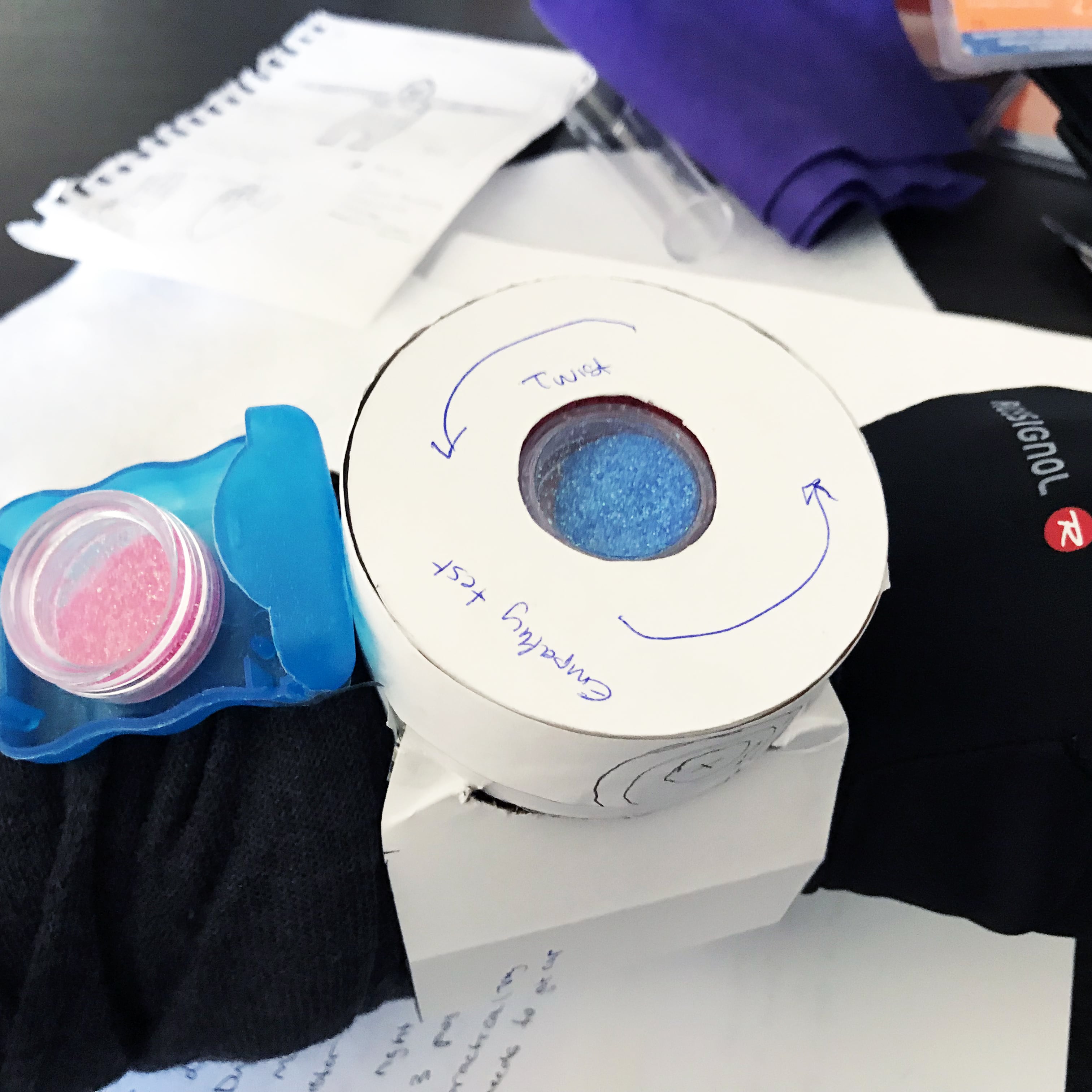
Iteration 3
For the final iteration, a new design was considered reduced the precision required to operate the device. Additionally, the new design made the device more lightweight, incorporated symbolism and low light functionality.

Final Product

